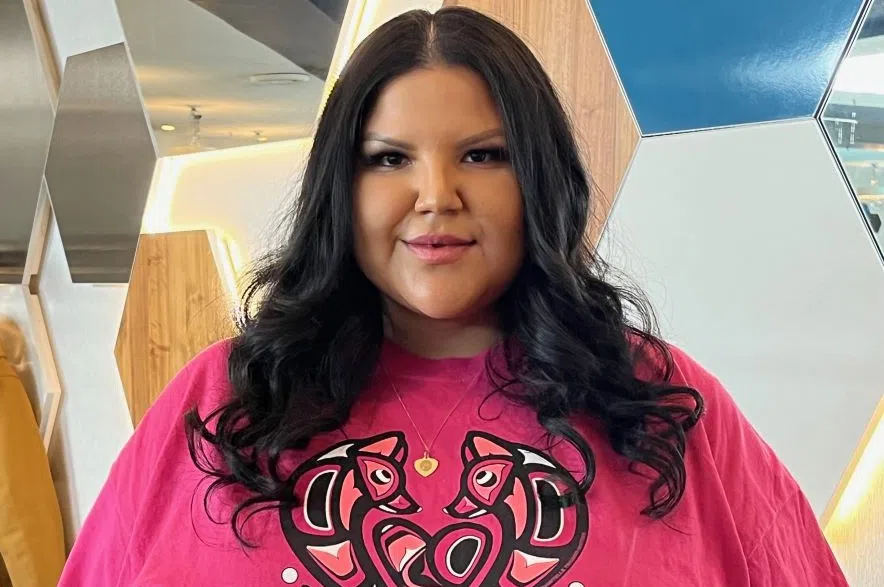A community addictions worker at the James Smith Cree Nation’s health clinic worries that without systemic changes, there could be more mass killings on reserves in the future.
Chelsey Stonestand, who’s related to Myles Sanderson’s victims Bonnie and Gregory Burns, said the thought has been on her mind this weekend, as dramatic videos of a dangerous police chase and Sanderson’s arrest were played over and over at the inquest into the killer’s death.
Sanderson killed 11 people and injured 17 others during a stabbing rampage on the James Smith Cree Nation and in Weldon on Sept. 4, 2022. A previous inquest held in Melfort examined the deaths of his victims.
“My mind is running, but what I think collectively of First Nations people and where we are in society right now, I think the (probability) of this happening was very likely, and I fear there may be more Myles Sanderson cases in the future,” Stonestand said.
On Thursday, the inquest into Sanderson’s death continued with testimony from two witnesses. The jury then was charged and started deliberating early in the afternoon.
Learning through the inquests that Sanderson was considered a “medium” violent-risk offender, Stonestand said she’s fearful the 29 recommendations made at the Melfort inquest and the potential recommendations the current jury of six may make in Saskatoon won’t be enough to bring about meaningful changes.
“I would like to see more programming in the institutions regarding mental health and addictions,” she said.
She said risk assessments are important, but called for better programming in the justice system in order to address the underlying issues that lead to incarceration.
“I don’t believe that we should continue to put people behind bars and not find or resolve the issues for why they’re in the system.”
Sanderson’s thought process at the end of his life stood out to Stonestand as she watched video of his arrest and subsequent medical distress. Const. Bill Rowley, an RCMP officer who was the first to testify on Wednesday, told jurors the killer appeared “smug, arrogant, and cocky” as he was pulled from the getaway vehicle after it came to a stop.
“I was under the expectation that he was coming out to finish some unfinished business,” Rowley testified. “I thought it was going to turn into a shootout.”
Stonestand thought perhaps the high amount of cocaine in Sanderson’s system may have contributed to the way he acted toward officers after his arrest, mocking them and telling them they should have shot him.
She said she hopes what comes out of both inquests is a better understanding of deeper connections that are necessary to prevent situations like that from happening again, not just within the James Smith Cree Nation or other First Nations, but throughout society as a whole.
“I think there’s no one process that can help our healing,” Stonestand said.
“I think it’s a bunch of different things, and it’s up to each individual to access what service is going to benefit them on their journey. Healing is not linear.”
Inquest: Day 4 testimony
The final two witnesses Thursday testified about Sanderson’s time of death at Royal University Hospital and a post-mortem behavioural report.
Emergency room doctor Dr. William Papenfus told the jury that a trauma team had been assembled at RUH prior to Sanderson’s arrival on Sept. 7, 2022. Once the Rosthern advanced care ambulance arrived and Sanderson was transported to a bed, his pulse was taken in his groin and in his neck.
He was also attached to heart monitors and given an ultrasound, but no heart activity was detected. Papenfus called the time of death at 4:39 p.m.
The final witness to testify, criminal psychologist Dr. Matt Logan, read the contents of his post-mortem behavioural report on Sanderson.
Going though Sanderson’s medical and social history, he came to several conclusions, including that Sanderson was a psychopath.
Logan said Sanderson had a very difficult childhood rife with abuse and instability, moving between his mother’s, father’s and grandparents’ homes.
He was only sporadically employed, completed Grade 9 and part of Grade 10. He was suspended and expelled many times.
According to a parole board report in 2021, Sanderson had 59 convictions, dozens of which were for violent offences. He attempted suicide at the age of 28, had depression, and anxiety.
Logan testified he went through a checklist for psychopathy, compared Sanderson with other inmates also labelled psychopaths, and found that Sanderson’s superficial charm, lack of remorse, lack of empathy, disregard for legal documentation, and other indicators place him in the 94th percentile, meaning he was at or near the very highest psychopathic category.
He also described Sanderson as a “mission-oriented offender” — cool and calm, in control, hypo-emotional, with callous disregard for his victims, and not wanting to be stopped once he started something.
Logan testified Sanderson selected his victims not in a typical way, but by means of previous negative association, including those in the “Terror Squad,” a gang reference.
When asked why Sanderson did not harm the woman in Wakaw whose home he broke into, or Richard Sanderson on the One Arrow First Nation, Logan replied they had both complied with Sanderson and he didn’t have any negative association with them.
During the police chase, Logan said Sanderson could have committed “suicide by cop” or could have run into oncoming traffic, but he did not, probably because it “wasn’t his style.” He believed Sanderson was still “on a mission” to go to Saskatoon and kill his ex-partner, Vanessa Burns, and anyone else on his list.
“If he wanted to die in a blaze of glory, he would have done it in a much different way,” testified Logan.
However, the psuchologist said Sanderson also likely had “death ambivalence,” meaning he didn’t care if he died. Logan said Sanderson’s act of ingesting a massive quantity of cocaine was simply a “why waste good cocaine?” mentality.
Logan was also asked whether Sanderson was “destined” to be a killer.
“Absolutely not. Nobody is,” he said.
He told the jury Sanderson was a product of his environment, but that at the age of 32, while his psychopathy had progressed to the point where it may have been treatable, it was not “curable.”
Jury directions
Coroner Robert Kennedy told the jury members they had five questions to answer: Name of the deceased, date of death, time of death, cause of death, and by what means Sanderson died. In this case, he told the jury it could be either suicide, accidental or undetermined.
He also told the jury members that while they could make recommendations, it was not required. If they did so, he would then review them prior to releasing the findings and concluding the inquest.











